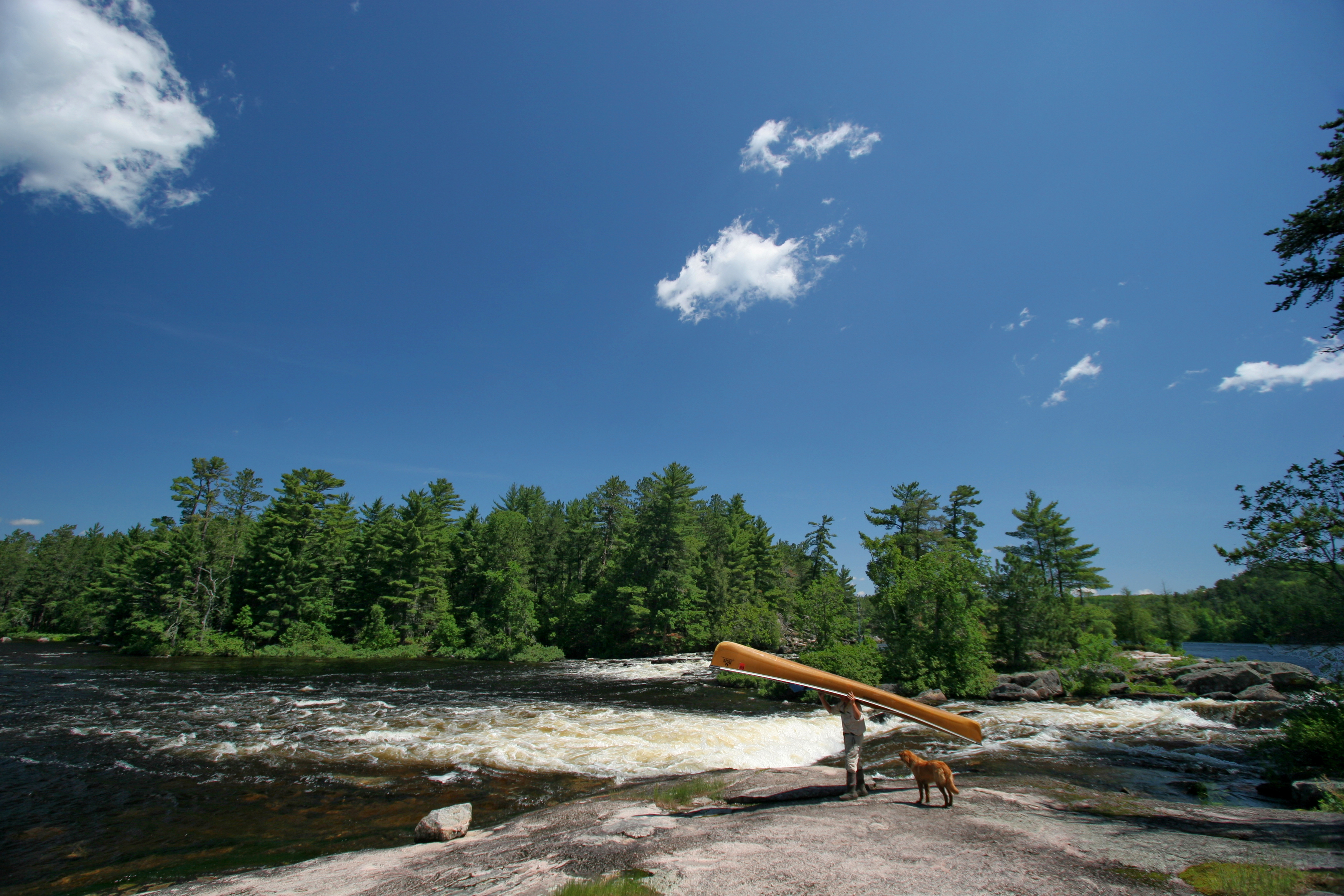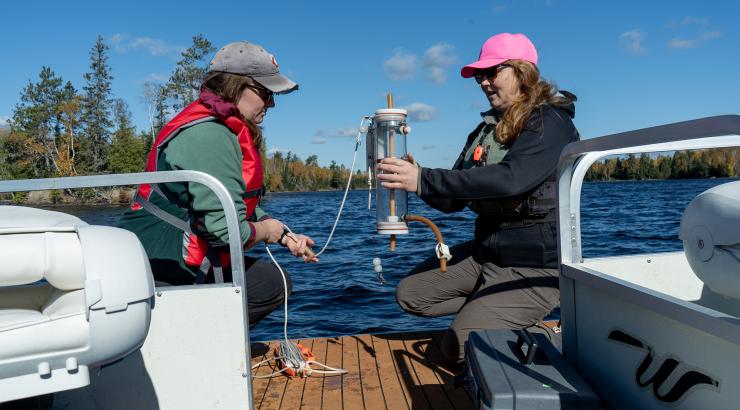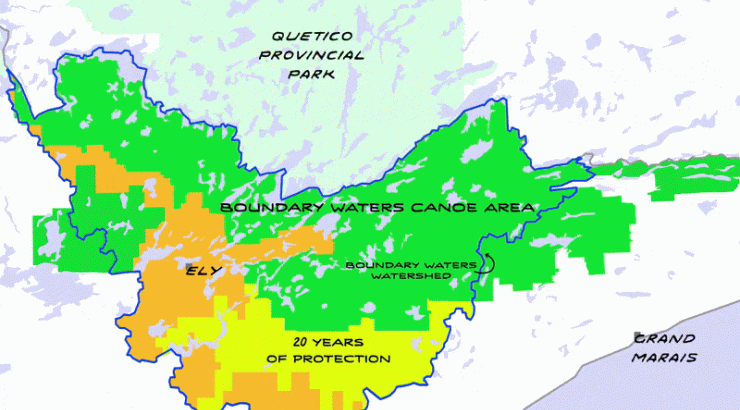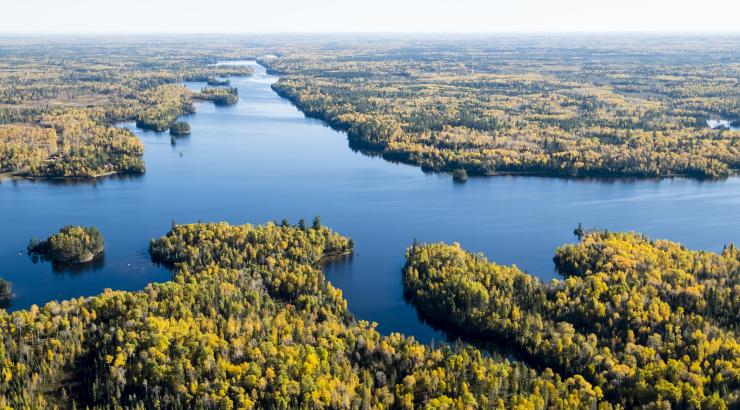 As you know, the Boundary Waters Canoe Area Wilderness is a beloved canoeing, fishing and hiking destination, known around the world for its wild landscape, deep silence and opportunities for solitude. Those qualities are threatened by Twin Metals mining company’s proposal to drill hundreds of wells as it seeks to develop a massive sulfide-ore copper mine on the edge of the Boundary Waters. The threat is mounting now, and you can take action today.
As you know, the Boundary Waters Canoe Area Wilderness is a beloved canoeing, fishing and hiking destination, known around the world for its wild landscape, deep silence and opportunities for solitude. Those qualities are threatened by Twin Metals mining company’s proposal to drill hundreds of wells as it seeks to develop a massive sulfide-ore copper mine on the edge of the Boundary Waters. The threat is mounting now, and you can take action today.
Earlier this month, the US Forest Service released an Environmental Assessment of Twin Metals’ request to begin drilling hydrogeologic wells on Superior National Forest land. Twin Metals itself argues that the hydrogeologic study is necessary so it can develop its proposed mine on the edge of the Wilderness. We’re concerned that in acting only on the application, the Forest Service’s Environmental Assessment ignored the devastating impacts that mining itself would have on the Boundary Waters and the communities it supports. By dodging this opportunity to study the cumulative impacts of mining-related activities, the Forest Service has acted in a way that will allow these harmful impacts to the Superior National Forest and Boundary Waters to multiply until their wild characteristics are fatally undermined and permanently lost.
T he proposed drilling program, combined with previously approved exploratory drilling, is estimated to subject 6,968 acres of the Boundary Waters Wilderness to drilling and mechanical noise. A total of 13,406 acres of the Superior National Forest open to recreation (including the Boundary Waters Wilderness acreage) would be impacted by the noise. Instead, the Forest Service should assess the impacts of sulfide-ore copper mining on America’s most popular Wilderness before allowing mining companies to carve up the Superior National Forest and threaten the solitude of the Boundary Waters.
he proposed drilling program, combined with previously approved exploratory drilling, is estimated to subject 6,968 acres of the Boundary Waters Wilderness to drilling and mechanical noise. A total of 13,406 acres of the Superior National Forest open to recreation (including the Boundary Waters Wilderness acreage) would be impacted by the noise. Instead, the Forest Service should assess the impacts of sulfide-ore copper mining on America’s most popular Wilderness before allowing mining companies to carve up the Superior National Forest and threaten the solitude of the Boundary Waters.
We hope that you will take action to ask the Forest Service to use common sense: assess the impacts of sulfide-ore copper mining before allowing companies to riddle the Superior National Forest with more holes.
This proposal is just the tip of the iceberg. We're counting on your continued support to make sure we protect the clean water and unspoiled forests of the Boundary Waters for this and future generations.
Here’s the message you can send to the US Forest Service today by taking action (there’s also the option to edit this or write your own). The comment period closes November 9.
The Boundary Waters Canoe Area Wilderness and Superior National Forest are irreplaceable national treasures. The watershed of the nation’s most popular Wilderness is an inappropriate place to site sulfide-ore copper mines, which have a consistent history of toxic pollution.
As the Twin Metals Minnesota Hydrogeologic Study Special Use Permit Environmental Assessment (EA) acknowledges, the Forest Service must preserve the wilderness character of the Boundary Waters (“untrammeled,” “undeveloped,” “natural” and presenting “opportunities for solitude”). Allowing sulfide-ore copper mines to be sited along the edge of the Boundary Waters would have major negative environmental and economic impacts, including harm to the wilderness character of the Boundary Waters. The EA inappropriately limits its scope to solely consider the impacts of the proposed hydrogeologic study special use permit and not the impacts of the mining activities that it is designed to bring about. Instead, the EA should include sulfide-ore copper mining as a reasonably foreseeable connected action; Twin Metals Minnesota would not propose the hydrogeologic study if it did not seek to develop a massive sulfide-ore copper mine on the edge of the Boundary Waters.
In addition to the inappropriately limited scope of the EA, the proposed drilling would have unacceptable impacts to the wilderness character of the Boundary Waters for sustained lengths of time. Twenty-four hour drilling for up to 4 weeks at a time for 6-18 months would severely impair opportunities for solitude, especially when combined with the already approved exploratory drilling programs. Drilling noise would disrupt recreation opportunities on 13,406 acres of the Superior National Forest (including 6,968 acres within the Boundary Waters), which would impact a significant number of summer and winter users. The number of both summer and winter visitors impacted by drilling should be kept at a minimum.
Finally, should the special use permit be approved, it is essential that the hydrogeological data collected by Twin Metals be shared in a digital, useable form (i.e., Excel spreadsheet instead of static PDF) with both the agencies and the public. If Twin Metals is allowed to abuse public lands, it must share its results with the public.
Please take action today in helping protect this beloved national wilderness. Add your comment to express your concerns. There’s more work to do, but this is an important step in our efforts to gain permanent protection for this watershed.
Rachel Garwin is the Campaign's policy director. She holds an M.S. in Natural Resources from the University of Vermont. Every month, Science Desk will include our latest scientific support and share a deeper understanding of the potential environmental impact from sulfide-ore copper mining near the Boundary Waters.


